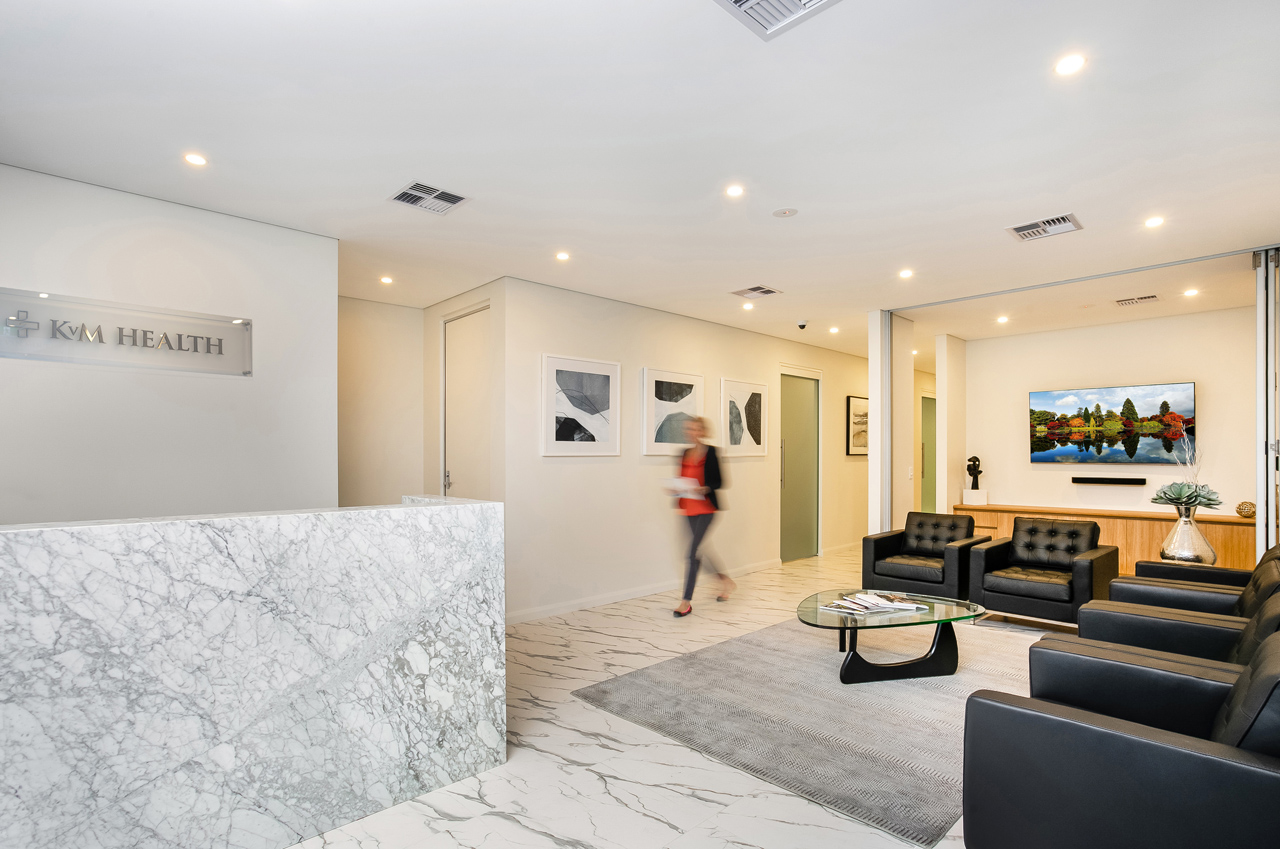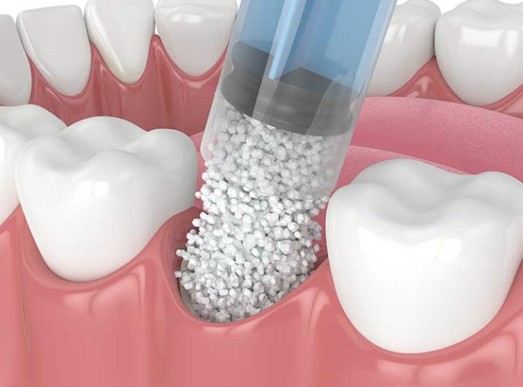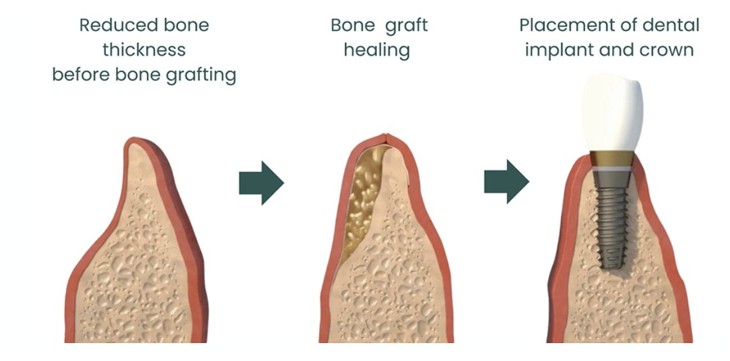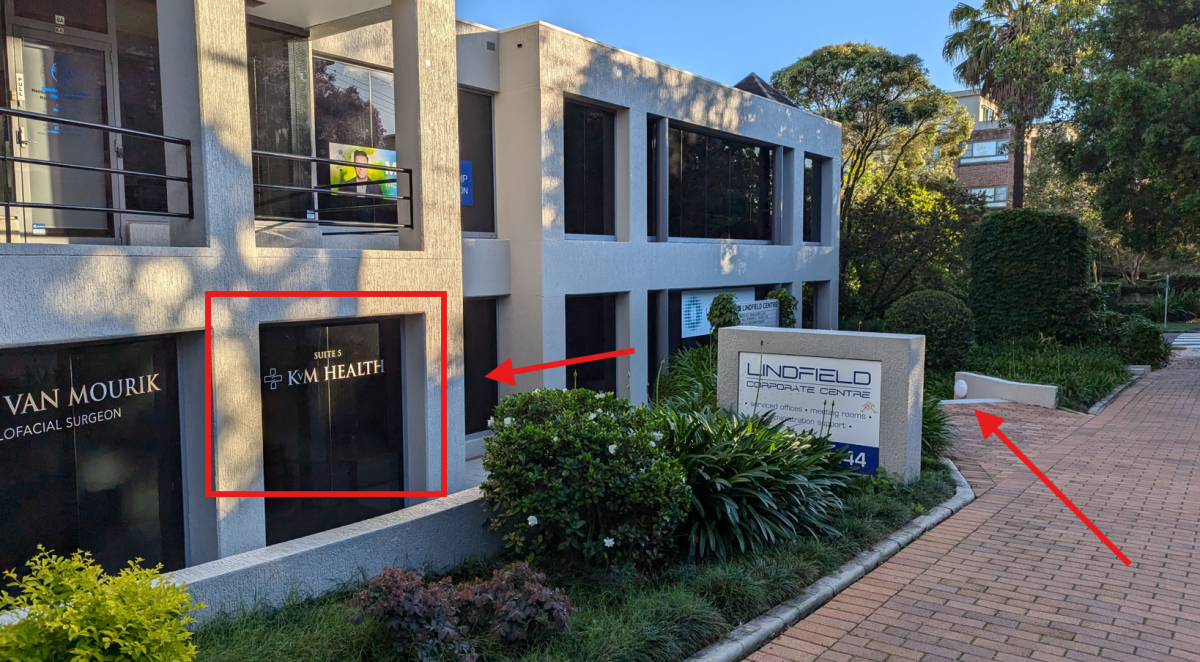Dental Bone & Soft-Tissue Grafting Specialist Sydney
Dental Bone Grafting
Dr Kristian van Mourik offers bone grafting from socket preservation, ridge augmentation and sinus lifts. To restore jaw strength and shape so dental implants and smiles last.
With more than 15 years of specialist practice, Dr Kristian van Mourik provides Dental Bone Grafting at clinics in Bondi Junction and Lindfield.


Our practice provides a wide scope of oral and maxillofacial surgery in Sydney, built on more than 15 years of specialist experience. With two established clinics and a patient-first approach, we focus on careful planning, clear communication, and safe surgical care. Learn more about our team and history in the link below
What is Dental Bone Grafting?
A dental bone graft helps restore the strength, shape, and density of your jawbone. It creates a solid foundation for the placement of dental implants and dentures.
Bone grafting is a general term that can include:
- Socket preservation: Protects and maintains bone after a tooth is removed.
- Ridge augmentation: Increases the width or height of the jawbone for implants.
- Sinus lift: Adds bone to the upper jaw near the molars and premolars.
Generally during a bone grafting procedures your surgeon adds special bone graft material, either natural or synthetic, to areas where bone has thinned or been lost.
This material acts like a scaffold, giving your body the structure it needs to naturally grow and rebuild new bone.

Types of Bone Graft Materials
Allograft
Bone from a human donor, sourced from a licensed tissue bank.
Alloplast
A synthetic, lab-made material (such as hydroxyapatite, a naturally occurring mineral).
Autograft
Your own bone, taken from another part of your body.
Xenograft
Bone from an animal source (usually cow or pig), obtained through licensed donor banks
When is Bone Grafting Required?
Bone grafting is recommended when there isn’t enough healthy jawbone to support dental implants or other restorations.
It may be required to:
- Fill a tooth socket after extraction.
- Build bone before dental implant placement.
- Lift sinuses in the upper jaw for implant support.
- Rebuild the jaw before dentures.
- Repair bone loss from trauma, infection, or gum disease.
- Stabilise loose teeth by strengthening surrounding bone.
Depending on your needs, bone grafting can be done after tooth removal, before, or during implant placement.
How Long Do Dental Bone Grafts Last?
A dental bone graft can last a lifetime if it fully integrates with your natural bone. High long term success rates are assisted by good oral hygiene, healthy lifestyle habits, and regular dental check-ups. Smoking or medical conditions like diabetes can slow healing or reduce graft stability.
However, bone is a living tissue — and if it’s not used it can gradually shrink or lose density over time. For the best results, most specialists recommend placing your dental implant within 6 to 12 months after the graft has healed, this appropriately loads the bone graft to prevent it from shrinking.
With proper care and timely implant placement, your dental bone graft in Sydney can provide a strong, lasting foundation.
Dental Bone Grafting Step by Step
The exact process can vary depending on where the graft is needed, but here’s a general overview of what to expect during treatment:
1. Anaesthesia
Your surgeon will numb the area with local anaesthetic. If you’ve chosen sedation, you’ll receive medication to help you relax or sleep during the procedure.
2. Gum Access
A small incision is made in your gums to gently expose the jawbone.
3. Cleaning the site
The area is thoroughly cleaned and disinfected.
4. Placing the graft
Bone graft material is added to areas where bone has thinned or been lost.
5. Protective membrane
A thin membrane is placed over the graft to protect it while healing. Some membranes dissolve naturally; others may need removal later.
6. Closing the gum
The gums are repositioned and stitched closed.
7. Optional healing boost
In some cases, platelet-rich plasma (PRP) from your own blood is applied to encourage faster healing and bone regeneration.

Recovery After Dental Bone Grafting
Recovery from a dental bone graft happens in stages, initial healing occurs in the first week and full bone integration takes several months.
Pain Management
It’s normal to experience some discomfort, swelling, and minor bleeding during the first 24–48 hours.
- Use prescribed pain medication as directed Most patients manage well with common pain relief such as Panadol® or Nurofen®
- Apply ice packs to your cheeks in short intervals for the first day to reduce swelling.
- Swelling usually peaks after 48 hours and then begins to subside.
Diet
- Stick to soft, cool foods (such as yoghurt, smoothies, soup, and mashed vegetables) for the first few days.
- Avoid hard, crunchy, or sticky foods that may disturb the graft.
- Gradually reintroduce solid foods after the first week
- Stay hydrated
Work or School
Most patients can return to work or school within a few days, as long as the activity isn’t physically demanding.
- Avoid strenuous exercise or heavy lifting for at least 48 hours after surgery.
- Listen to your body — if swelling or discomfort worsens, rest and allow more time for recovery.
Stitches and Site Care
- Stitches may dissolve on their own
- Keep the area clean but avoid brushing directly over the graft for a couple of days.
- Do not spit, rinse vigorously, or smoke, as these can disrupt healing and dislodge the graft.
- Avoid smoking
Follow-Up Appointments
Your Oral and Maxillofacial Surgeon will schedule follow-up visits to monitor your progress.
- X-rays may be taken to check bone integration.
- Once healing is confirmed, the next step (such as dental implant placement) can proceed.
Cost of Dental Bone Graft in Sydney
The cost of a dental bone graft varies depending on several factors, including:
- The size and location of the graft area
- The complexity of the procedure
- The type of graft material used
- The type of anaesthesia required
- Whether the surgery is performed in-clinic or in hospital
Medicare provides a rebate for part of the initial consultation and may cover some hospital-related fees if your procedure is performed in an accredited facility.
If an anaesthetist is required, Medicare and your private health insurance will also contribute to their fees — although some out-of-pocket expenses will still apply.
After your consultation, you’ll receive a detailed written quote with item numbers, allowing you to check with your private health fund to confirm available rebates and out-of-pocket costs.
While price is an important consideration, it’s equally important to choose an experienced Oral & Maxillofacial Surgeon who can perform the procedure safely and provide clear guidance for your recovery
Why Seeing and Oral and Maxillofacial Surgeon Matters
Dental bone graft procedures are more complex than many other dental treatments
Choosing a highly trained surgeon helps reduce the risk of complications such as:
- Excessive bleeding
- Infection or graft failure
- Nerve injury or prolonged numbness
Why choose an Oral and Maxillofacial Surgeon?
Oral and Maxillofacial Surgeons are qualified as doctors, dentists, and surgeons — giving them the highest level of training in oral surgery and bone reconstruction.
They perform bone grafting procedures regularly and provide care held to the highest surgical and safety standards.
The benefits of specialist care:
- Surgery performed to the highest technical standard
- The best chance of graft integration and long-term success
- Treatment guided by the most current medical and dental knowledge
- A lower risk of complications
- Specialist medical expertise to manage complications, should they arise
Trust an Oral and Maxillofacial Surgeon for the safest and most successful outcomes in your dental bone graft procedure.

Meet Dr Kristian van Mourik
Dr Kristian van Mourik is a fully qualified Oral & Maxillofacial Surgeon with more than 15 years of specialist practice in Sydney. He holds dual degrees in medicine and dentistry, supported by extensive surgical training, making him one of the few surgeons in Australia with this level of expertise.
Academic background includes:
- Bachelor of Biomedicine – Monash University
- Bachelor of Dentistry with Honours – University of Sydney
- Bachelor of Medicine / Bachelor of Surgery – University of Sydney
His practice covers the full scope of oral and maxillofacial surgery, including TMJ disorders, corrective jaw surgery, wisdom tooth removal, dental implants, trauma surgery, and oral pathology. Dr van Mourik is registered with both the Medical Board of Australia and the Dental Board of Australia as a specialist Oral & Maxillofacial Surgeon.
Dr Kristian Van Mourik Associations & Accreditations







Dental Bone Grafting Sydney FAQs
How successful are dental bone grafts?
Dental bone grafts are a highly successful and predictable treatment — many studies report success rates well above 90%,. Autografts (your own bone) remain the “gold standard” with the most predictable success rates. However, no procedure is entirely without risk. Factors such as smoking, poor medical health (e.g., uncontrolled diabetes), or compromised jawbone quality can increase the chance of graft or implant failure.
What are the risks/complications of dental bone grafts?
A dental bone graft is generally very safe, especially when performed by an experienced Oral and Maxillofacial Surgeon. However, as with any surgery, there are small risks, including:
- Mild reaction to anaesthesia
- Infection at the graft site
- Temporary numbness or tingling (nerve irritation)
- Minor bleeding or swelling
- Rare graft failure (more likely in smokers or those with medical conditions)
These issues are uncommon, and your Sydney dental bone graft specialist will take every precaution to ensure a smooth and comfortable recovery.
What are the common side effects after a dental bone graft?
After your dental bone graft procedure, it’s normal to experience some mild swelling, tenderness, or bruising for up to one to two weeks. These symptoms can usually be managed with over-the-counter pain relief, and your surgeon may prescribe antibiotics to prevent infection.
You might notice tiny bone fragments coming from the surgical site in the first few days — they can look like grains of salt or sand. This is normal, but if you notice a large amount or have concerns, contact your surgeon.
How can I make my dental bone graft recovery easier?
Do:
- Apply ice packs to your outer jaw to reduce swelling.
- Eat soft foods for several days after surgery.
- Keep your head elevated to minimise swelling.
- Follow all post-op instructions from your surgeon.
- Keep the surgical site clean and take medications as prescribed.
Don’t:
- Disturb or touch the surgical area.
- Drink alcohol for at least two weeks after surgery.
- Exercise or lift heavy items for 48 hours post-procedure.
- Spit or rinse your mouth vigorously.
- Smoke or vape during recovery, as this can slow healing.
- How long does it take to recover from a dental bone graft?
Recovery time varies depending on the size and complexity of your dental bone graft in Sydney. Most patients experience initial healing within a week, but the bone itself usually needs around three months to fully integrate with your jaw. For larger or more complex bone grafts, complete healing may take between nine and 12 months.
Signs of dental bone graft failure may include:
- Persistent or worsening pain or swelling after the first week.
- Pus or discharge around the surgical site.
- Gum recession (when gums pull away from the teeth).
- No improvement in jawbone volume or implant support.
If you notice any of these symptoms, contact your dental surgeon in Sydney as soon as possible for assessment and care.
Areas We Service for Dental Bone Grafting Sydney
TMJ management and surgery available across Sydney’s Eastern Suburbs and North Shore.
- Bondi
- Bronte
- Clovelly
- Coogee
- Randwick
- Paddington
- Woollahra
- Double Bay
- Bellevue Hill
- Tamarama
- Waverley
- Surrounding Eastern Suburbs
- Roseville
- Chatswood
- Killara
- Gordon
- Pymble
- Turramurra
- St Ives
- Wahroonga
- Hornsby
- Willoughby
- Castle Cove
- Other North Shore suburbs
Our Sydney Clinics

Bondi Junction
Located in the heart of the Eastern Suburbs, our Bondi Junction clinic is easily accessible by train, bus, and nearby parking.

Lindfield
Conveniently positioned on the North Shore, our Lindfield clinic is close to public transport and offers parking options nearby.
